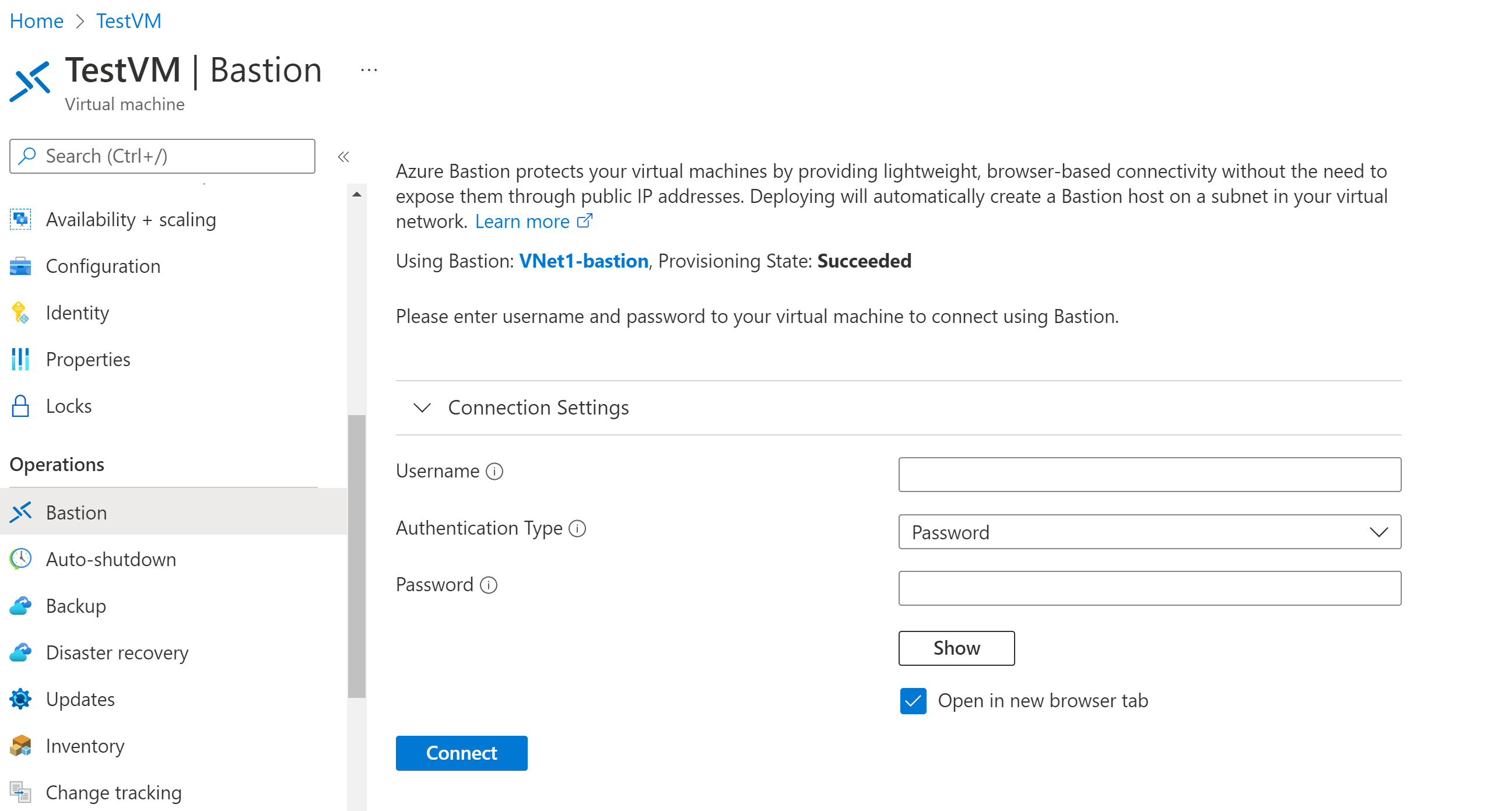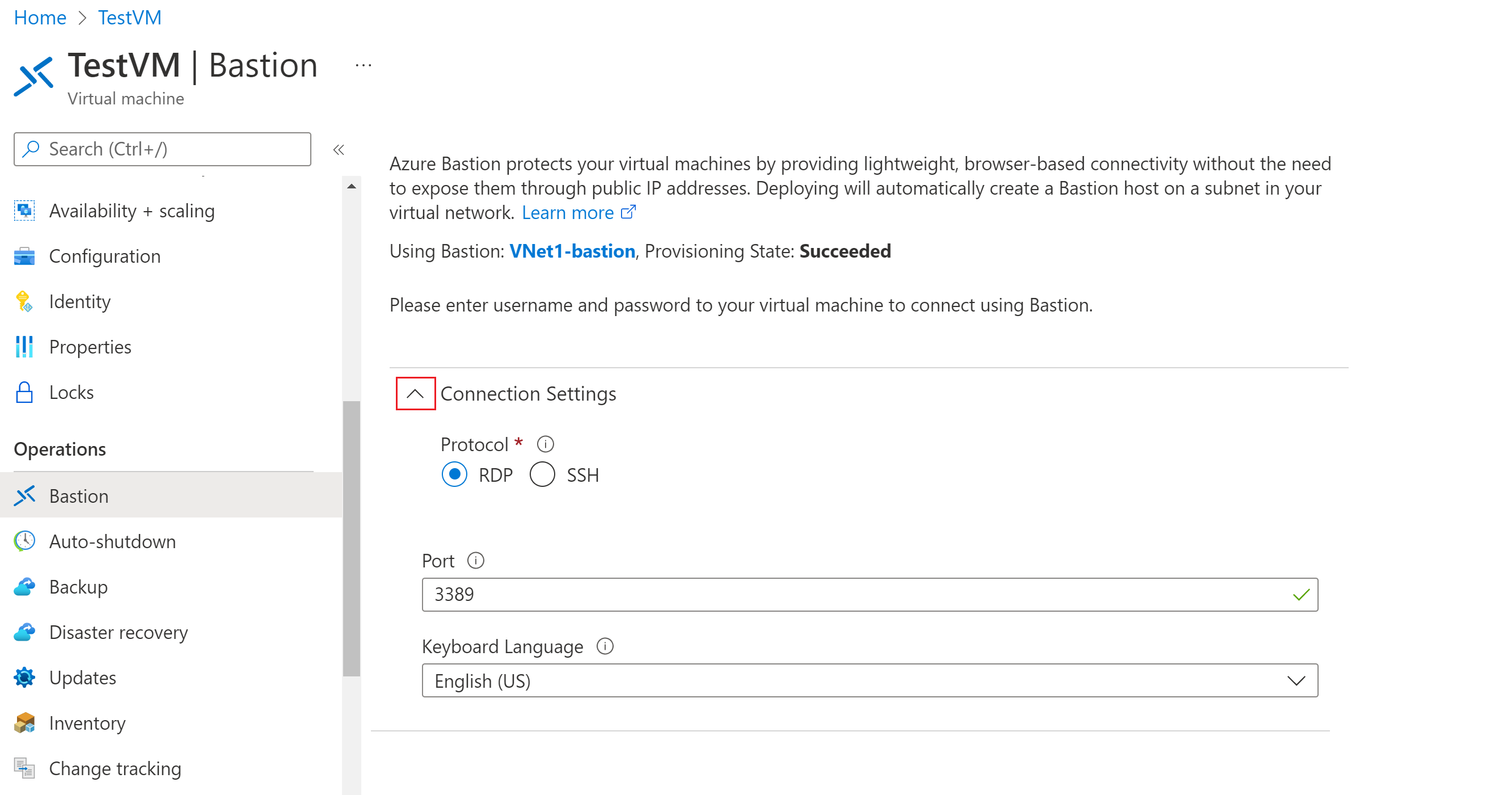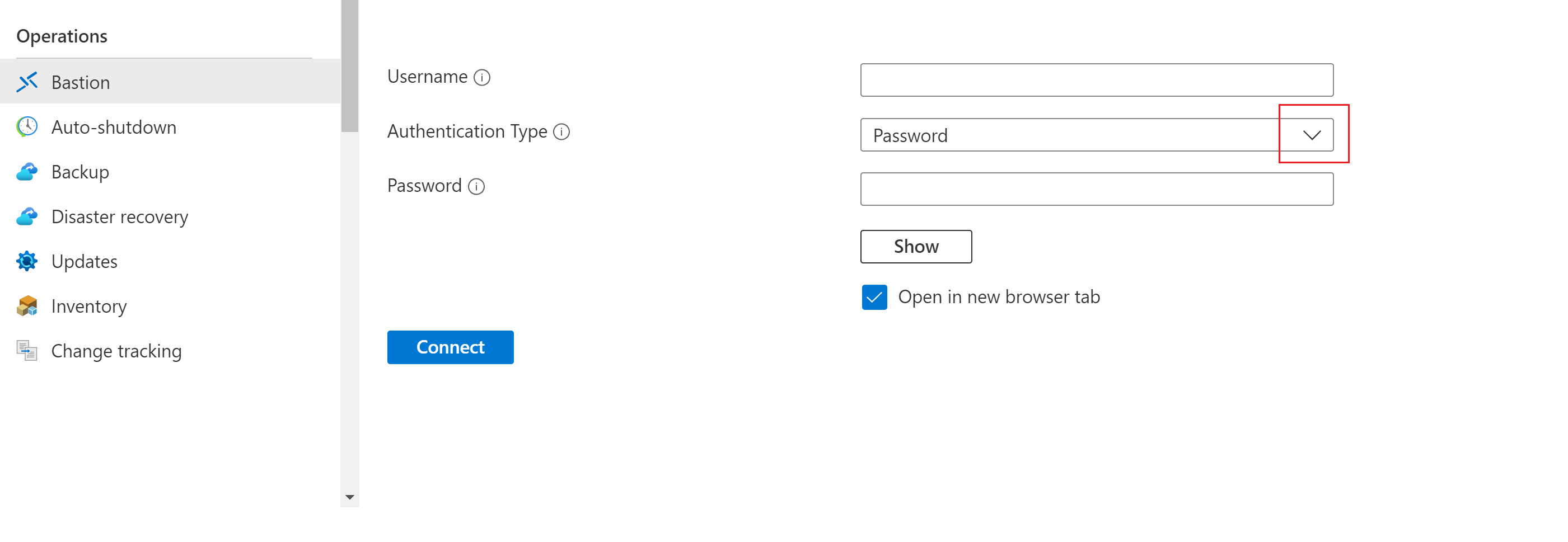Deploy Bastion using Azure CLI
This article shows you how to deploy Azure Bastion using CLI. Azure Bastion is a PaaS service that's maintained for you, not a bastion host that you install on your VM and maintain yourself. An Azure Bastion deployment is per virtual network, not per subscription/account or virtual machine. For more information about Azure Bastion, see What is Azure Bastion?
Once you deploy Bastion to your virtual network, you can connect to your VMs via private IP address. This seamless RDP/SSH experience is available to all the VMs in the same virtual network. If your VM has a public IP address that you don't need for anything else, you can remove it.
In this article, you create a virtual network (if you don't already have one), deploy Azure Bastion using CLI, and connect to a VM. You can also deploy Bastion by using the following other methods:
Note
The use of Azure Bastion with Azure Private DNS zones is supported. However, there are restrictions. For more information, see the Azure Bastion FAQ.
Before beginning
Azure subscription
Verify that you have an Azure subscription. If you don't already have an Azure subscription, you can activate your MSDN subscriber benefits or sign up for a free account.
Azure CLI
This article uses the Azure CLI. To run commands, you can use Azure Cloud Shell. The Azure Cloud Shell is a free interactive shell that you can use to run the steps in this article. It has common Azure tools preinstalled and configured to use with your account.
To open the Cloud Shell, just select Try it from the upper right corner of a code block. You can also launch Cloud Shell in a separate browser tab by going to https://shell.azure.com and toggle the dropdown in the left corner to reflect Bash or PowerShell. Select Copy to copy the blocks of code, paste it into the Cloud Shell, and press enter to run it.
Deploy Bastion
This section helps you deploy Azure Bastion using Azure CLI.
Important
Hourly pricing starts from the moment that Bastion is deployed, regardless of outbound data usage. For more information, see Pricing and SKUs. If you're deploying Bastion as part of a tutorial or test, we recommend that you delete this resource after you finish using it.
If you don't already have a virtual network, create a resource group and a virtual network using az group create and az network vnet create.
az group create --name TestRG1 --location eastusaz network vnet create --resource-group TestRG1 --name VNet1 --address-prefix 10.1.0.0/16 --subnet-name default --subnet-prefix 10.1.0.0/24Use az network vnet subnet create to create the subnet to which Bastion will be deployed. The subnet you create must be named AzureBastionSubnet. This subnet is reserve exclusively for Azure Bastion resources. If you don't have a subnet with the naming value AzureBastionSubnet, Bastion won't deploy.
- The smallest subnet AzureBastionSubnet size you can create is /26. We recommend that you create a /26 or larger size to accommodate host scaling.
- For more information about scaling, see Configuration settings - Host scaling.
- For more information about settings, see Configuration settings - AzureBastionSubnet.
- Create the AzureBastionSubnet without any route tables or delegations.
- If you use Network Security Groups on the AzureBastionSubnet, refer to the Work with NSGs article.
az network vnet subnet create --name AzureBastionSubnet --resource-group TestRG1 --vnet-name VNet1 --address-prefix 10.1.1.0/26- The smallest subnet AzureBastionSubnet size you can create is /26. We recommend that you create a /26 or larger size to accommodate host scaling.
Create a public IP address for Azure Bastion. The public IP is the public IP address the Bastion resource on which RDP/SSH will be accessed (over port 443). The public IP address must be in the same region as the Bastion resource you're creating. For this reason, pay particular attention to the
--locationvalue that you specify.az network public-ip create --resource-group TestRG1 --name VNet1-ip --sku Standard --location eastusUse az network bastion create to create a new Azure Bastion resource for your virtual network. It takes about 10 minutes for the Bastion resource to create and deploy.
The following example deploys Bastion using the Basic SKU tier. You can also deploy using other SKUs. The SKU determines the features that your Bastion deployment supports. If you don't specify a SKU in your command, the SKU defaults to Standard. For more information, see Bastion SKUs.
az network bastion create --name VNet1-bastion --public-ip-address VNet1-ip --resource-group TestRG1 --vnet-name VNet1 --location eastus --sku Basic
Connect to a VM
If you don't already have VMs in your virtual network, you can create a VM using Quickstart: Create a Windows VM, or Quickstart: Create a Linux VM
You can use any of the following articles, or the steps in the following section, to help you connect to a VM. Some connection types require the Bastion Standard SKU or higher.
- Connect to a Windows VM
- Connect to a Linux VM
- Connect to a scale set
- Connect via IP address
- Connect from a native client
Connect using the portal
The following steps walk you through one type of connection using the Azure portal.
In the Azure portal, go to the virtual machine that you want to connect to.
At the top of the pane, select Connect > Bastion to go to the Bastion pane. You can also go to the Bastion pane by using the left menu.
The options available on the Bastion pane depend on the Bastion SKU. If you're using the Basic SKU, you connect to a Windows computer by using RDP and port 3389. Also for the Basic SKU, you connect to a Linux computer by using SSH and port 22. You don't have options to change the port number or the protocol. However, you can change the keyboard language for RDP by expanding Connection Settings.
If you're using the Standard SKU, you have more connection protocol and port options available. Expand Connection Settings to see the options. Typically, unless you configure different settings for your VM, you connect to a Windows computer by using RDP and port 3389. You connect to a Linux computer by using SSH and port 22.
For Authentication Type, select from the dropdown list. The protocol determines the available authentication types. Complete the required authentication values.
To open the VM session in a new browser tab, leave Open in new browser tab selected.
Select Connect to connect to the VM.
Confirm that the connection to the virtual machine opens directly in the Azure portal (over HTML5) by using port 443 and the Bastion service.

Note
When you connect, the desktop of the VM will look different from the example screenshot.
Using keyboard shortcut keys while you're connected to a VM might not result in the same behavior as shortcut keys on a local computer. For example, when you're connected to a Windows VM from a Windows client, Ctrl+Alt+End is the keyboard shortcut for Ctrl+Alt+Delete on a local computer. To do this from a Mac while you're connected to a Windows VM, the keyboard shortcut is fn+control+option+delete.
To enable audio output
You can enable remote audio output for your VM. Some VMs automatically enable this setting, whereas others require you to enable audio settings manually. The settings are changed on the VM itself. Your Bastion deployment doesn't need any special configuration settings to enable remote audio output.
Note
Audio output uses bandwidth on your internet connection.
To enable remote audio output on a Windows VM:
- After you're connected to the VM, an audio button appears on the lower-right corner of the toolbar. Right-click the audio button, and then select Sounds.
- A pop-up message asks if you want to enable the Windows Audio Service. Select Yes. You can configure more audio options in Sound preferences.
- To verify sound output, hover over the audio button on the toolbar.
Remove VM public IP address
Azure Bastion doesn't use the public IP address to connect to the client VM. If you don't need the public IP address for your VM, you can disassociate the public IP address. See Dissociate a public IP address from an Azure VM.
Next steps
- To use Network Security Groups with the Azure Bastion subnet, see Work with NSGs.
- To understand VNet peering, see VNet peering and Azure Bastion.



